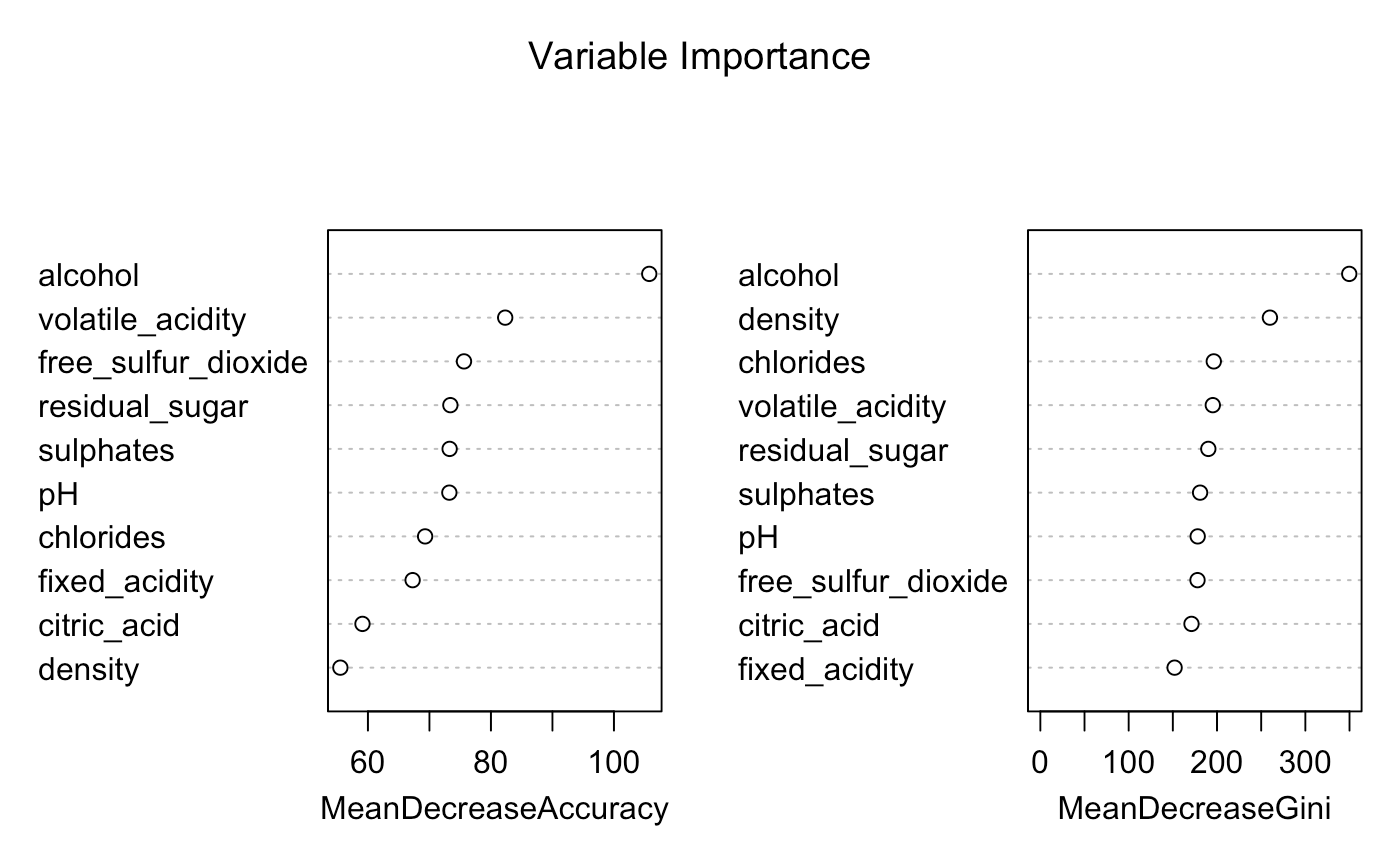After modeling my Random Forest on my full dataset and the necessary predictor variables I am producing the below variable importance plot.
I'm currently trying to wrap my head around how to interpret these plots? It is obvious to me that alcohol is the more important predictor when it comes to model results, and without it, the model accuracy will decrease. However, how can I interpret these values based on their Mean Decrease Accuracy and Mean Decrease Gini?
Current Code:
wine=read.csv("wine_dataset.csv")
wine$quality01[wine$quality >= 7] <- 1
wine$quality01[wine$quality < 7] <- 0
wine$quality01=as.factor(wine$quality01)
summary(wine)
num_data <- wine[,sapply(wine,is.numeric)]
hist.data.frame(num_data)
set.seed(8, sample.kind = "Rounding") #Set Seed to make sure results are repeatable
wine.bag=randomForest(quality01 ~ alcohol + volatile_acidity + sulphates + residual_sugar +
chlorides + free_sulfur_dioxide + fixed_acidity + pH + density +
citric_acid,data=wine,mtry=3,importance=T) #Use Random Forest with a mtry value of 3 to fit the model
wine.bag #Review the Random Forest Results
plot(wine.bag) #Plot the Random Forest Results
varImpPlot(wine.bag)
I'm noticing some Mean Decrease Accuracy values over 100 and that is throwing me off.
Any tips would be appreciated.


